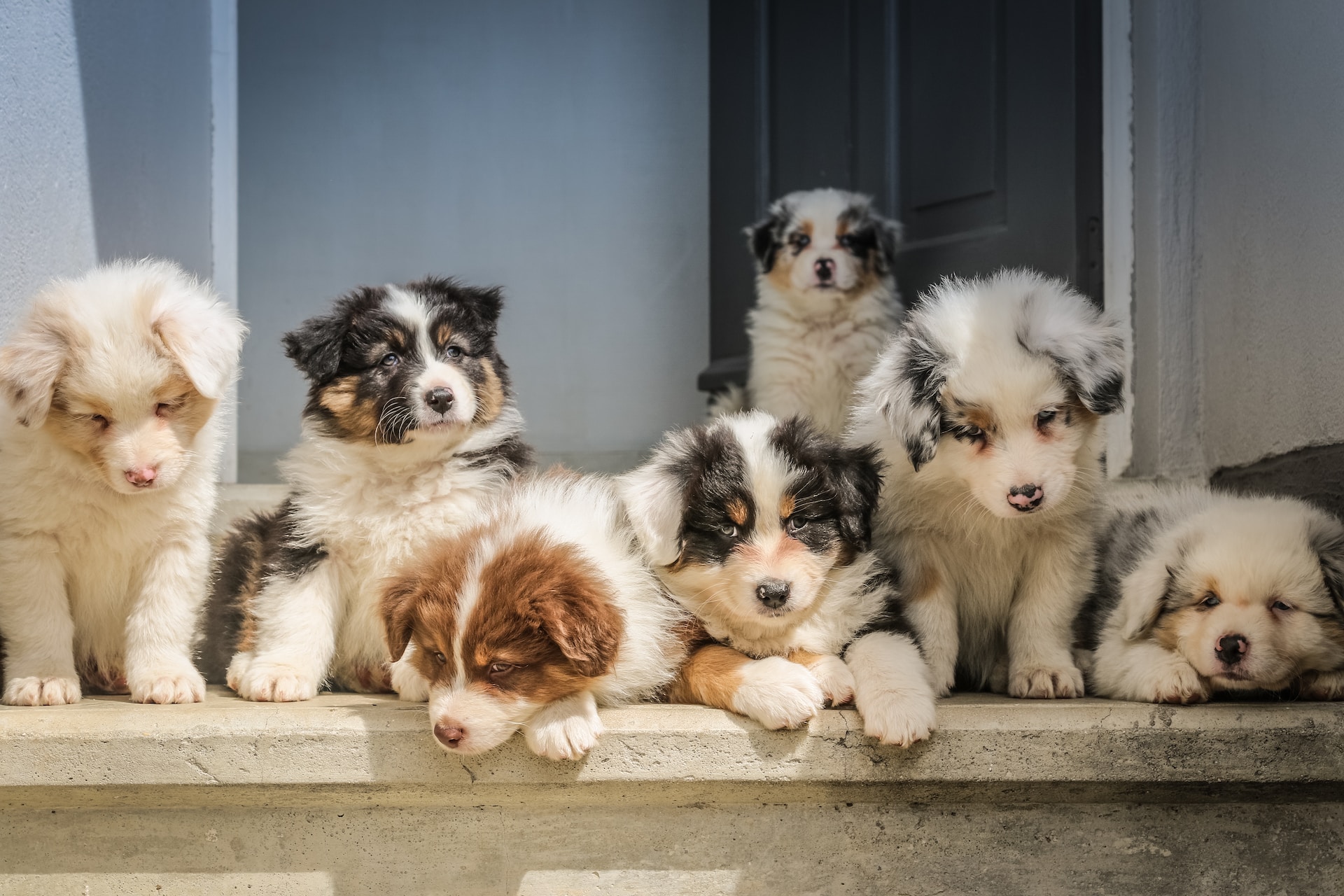
14 Dec Teeth in Transition: What to Expect When Your Puppy or Kitten is Teething
I adopted a rescue pup, who we named Rupert, in September. Rupert was only about 10 weeks old at the time, so all his teeth were deciduous, meaning that they would eventually fall out and be replaced by adult or permanent teeth. And oh, how sharp those deciduous teeth were! The deciduous teeth of puppies and kittens look like miniature versions of adult teeth but are much sharper and more pointed.

When Do Deciduous Puppy and Kitten Teeth Erupt?
Puppies have 28 deciduous teeth and kittens have 26. When they are born, there are no visible teeth, but both the deciduous and adult teeth are developing in the jaws. The deciduous teeth start to erupt around 3-4 weeks in puppies and 2-3 weeks in kittens. All the deciduous teeth in kittens erupt by 6 weeks of age, but it may take puppies up to 12 weeks to get all their deciduous premolars. One surprising fact is that the roots of deciduous teeth are proportionately longer than those of adult teeth! As you can imagine, the eruption of those sharp teeth is a good incentive for the mother dog or cat to wean those babies!

When Do Puppies and Kittens Get Their Adult Teeth?
Many of us don’t meet our pets until all the deciduous teeth have erupted, but we may get to witness the eruption of the adult teeth. In puppies and kittens, this process starts around 3-4 months of age and is generally finished by 6 months. If you think about it, that’s an awful lot of change in just a few months. Dogs lose those 28 deciduous teeth and get 42 adult teeth. Kittens lose 26 deciduous teeth and get 30 adult teeth. During this stage, the face grows quite a bit to accommodate all those new teeth. Dogs and cats get longer and broader muzzles.
What Do Deciduous Teeth Look Like?
You might find some of your pet’s deciduous teeth during this time. They usually look like hollow caps. The roots have dissolved, and the crown falls off (exfoliates), either ending up on the floor or out in the yard or sometimes even getting swallowed. You might also find blood on a toy that’s been chewed. Rupert is currently going through this stage but so far I have only found two of the deciduous teeth that were lost. Most of the time this whole process goes off without a hitch, but some pets need a little help.

Tooth Eruption Difficulties
Toy breed puppies like Yorkies and Shih Tzus often have difficulty losing their deciduous teeth. If an adult tooth comes in without the deciduous tooth leaving, it creates crowding and may also cause the adult teeth to erupt in the incorrect position. In most cases, if a deciduous tooth is still present at 6 months of age, it should be extracted unless there is no adult tooth to replace it.
Larger breed puppies tend to be more aggressive chewers and can fracture deciduous teeth. Because deciduous teeth have very thin walls, a fracture will result in pulp exposure, killing the pulp. The death of the pulp can halt the normal sequence of root resorption and exfoliation. Deciduous teeth can abscess and not only is that painful, but it can also damage the underlying adult tooth. All these problems create a traffic jam, slowing or preventing the deciduous tooth from falling out and the adult tooth from erupting. Fractured deciduous teeth should be extracted to prevent this and puppies should not be allowed to chew on hard objects.
Kittens rarely have any difficulty with tooth eruption unless trauma has affected the developing adult tooth bud. If this happens to a puppy or kitten, it may deform the soft tooth bud resulting in a displaced or malformed adult tooth that may not be able to erupt.
What to Do if Your Puppy or Kitten Isn’t Losing Teeth
If your puppy or kitten is missing any adult teeth at 6 months of age, it’s time to get some diagnostic imaging to verify that the teeth are truly missing. Sometimes we can help a tooth that’s slow to erupt by removing the gum tissue over the crown of the tooth. If that is not possible, then the tooth may need to be extracted to prevent the formation of a dentigerous cyst (see our previous blog on this subject).
Puppy and Kitten Dentist in Fort Collins, Colorado
The development of a puppy or kitten is not just fun to watch, it’s also a miracle of speedy skeletal and dental growth. Rupert weighed 6 lbs at adoption. He wasn’t housebroken and did not know how to walk on a leash. Now he is over 15 lbs, (almost) never has an accident, and loves going for car rides and hikes. He is a small breed, so I will be keeping an eye on his tooth eruption. If you think your puppy or kitten is having a tooth problem, please give us a call and we will be happy to help!

Images used under creative commons license – commercial use (12/14/2023). Photo by Jametlene Reskp on Unsplash



